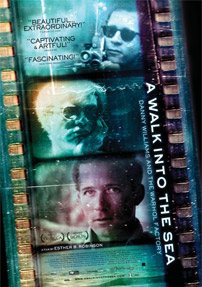Filmmaker's Statement
Every family history has its missing. People whose lives diverge from the accepted narrative are often excised, but their presence hovers. Photo albums, memories, grief remain. My grandmother never spoke about my uncle Danny but she kept a separate shelf of books about the Warhol factory. If I cracked her copy of The Andy Warhol Diaries, or Edie: an American Girl, it would fall open to a small picture of Danny, or the odd underlined sentence that included his name. As a child I was obsessed with these books, the short descriptions of Danny and this silence. Why weren't we allowed to ask certain things? Why would the name Andy Warhol make my Grandmother turn away?
As I grew older, I began to recognize the figures in the photos next to my uncle. How did some people become famous and others forgotten? Why were some stories told and not others? Who was this young man in the black and white photos?
For two years after we learned of Danny's films, the Museum of Modern Art resisted returning them to our family, or even allowing us to view them. While I called, cajoled and talked with a seemingly indifferent institution, I began interviewing my grandmother, poking at the edges of Danny's disappearance, asking the questions no-one would ask. It was scary and I felt oddly ambivalent. How much do you want to know about the failings of the ones you love? How much do you want to share those failings with a larger public?
But I was captivated by small things: seeing what questions my grandmother would answer, seeing where her love of Danny could stop short of acceptance, where her eyes would falter, her hands would worry the papers. I was captivated by the details of love, of family, of an era. But these interests were nothing compared to the feeling that descended once we got the films back. Suddenly the urgency was tangible.
As I prepped them for transfer to video, making sure the 40-year splices would hold, checking for warping, I could see the frames, perfectly exposed, with Warhol's face glowing in a tiny rectangle. The transfer was merely the confirmation: staring at the perfectly preserved images, we gasped at the sight of an incandescent Edie Sedgwick. Watching repeated shots of her silvery hands floating in inky blackness, I had the strange realization that my obsession with shooting my grandmother's hands was mirrored; I felt the prickly deja-vu of sharing an aesthetic compulsion with someone I never knew.
We were speaking the strange quiet language of cinema and family, and this dialogue without words set the path for the documentary. Step by step, image by image, I would find out what happened to this young filmmaker, my uncle, Danny Williams.

